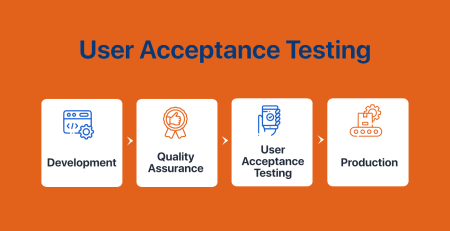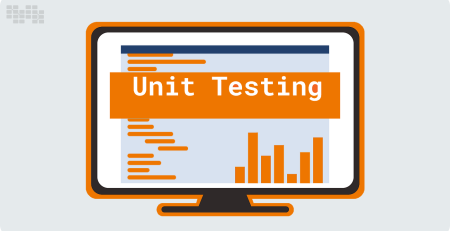Best Practices for QA Testing
Is your current testing process catching every bug before each new release? Do you believe that testing is holding you back?
These best QA practices will alter how you integrate testing into your development process. Let’s look at agile methodology and how it can help you improve speed, scale, and coverage.
QA Testing in numbers
$1.7 Trillion Estimated worldwide losses from software fails in 2017
45 percent of DevOps practitioners deploy on demand, necessitating continuous testing.
Apple paid a $200,000 bug bounty for the discovery of a firmware security flaw.
What is QA testing?
The process of ensuring that your product is of the highest possible quality for your customers is known as quality assurance (QA) testing. QA simply refers to the techniques used to prevent problems with your software product or service and to provide a positive user experience for your customers. But what are the best practices for quality assurance?
Combining test automation and manual testing
Ideally, your quality assurance (QA) testing methodology should combine both automated and manual testing. The key is determining which type of test is most appropriate for each aspect and stage of the product’s development.
You can cover a wide range of conditions and scenarios with manual testing. The feedback from the QA testers on the app’s experience and feel will be invaluable. Manual tests are preferred for exploratory, usability, and ad hoc testing. Manual tests should ideally be carried out by highly skilled and experienced testers who represent various end user profiles and use a diverse range of devices and operating systems.
Manual testing can be supplemented with frequent automated tests to save time while testing. When performing white box testing, load tests, and other performance tests, automation is the best solution.
Any test that must be repeated several times should be automated. Automated tests are practical and dependable, and they will assist you in ensuring that the app performs adequately from a technical standpoint.
Automation will not meet all of your testing requirements. Crowdtesting can be used to supplement in-house manual testing. With this method, your product can be tested on a much larger scale in a much shorter amount of time.
Incorporating agile methodologies into software testing
Another best QA practice worth considering is incorporating testing into a series of short development cycles.
Agile methodologies are appropriate for developing mobile apps because these products typically have short development cycles and mobile users have extremely high expectations for functionality, quality, and frequent updates.
QA testing is integrated into the design and development processes in agile methodologies, rather than being a separate phase. Quality becomes a guiding principle as test results are directly incorporated into the design and development processes.
This is a collaborative approach that necessitates communication or collaboration among designers, developers, the QA team, and, in some cases, users. You can use a single repository for the app code to facilitate collaboration.
Your teams will go through a brief design or development cycle, followed by a focused quality control and testing phase for the newly added feature. Additional regression, security, and stress testing can be performed as needed. What happens during the next design or development cycle is determined by the outcome of this phase.
When you take this approach, you will be able to keep things moving by utilizing automation. Test automation accelerates the targeted testing phases and allows you to move on to the next development cycle in hours or days. Manual tests should be scheduled after some key design or development cycles to incorporate feedback on the user experience and other key aspects of the app.
You must develop a framework for reviewing and utilizing the data generated during the short testing phases. It is not enough to simply perform functional testing; feedback should be incorporated into the design and development process as early as possible.
Writing good test cases
Should programmers write tests? On the one hand, the agile approach emphasizes ownership. When developers are involved in the test case writing process, QA becomes one of their responsibilities.
Developers who create tests, on the other hand, may become biased and write code that passes the test without meeting other quality standards, or they may unconsciously create a test with limited coverage.
As a result, some teams develop a test plan but then outsource the process or delegate it to dedicated QA engineers.
Even though each test case should have a narrow focus, your test case suite should be cohesive. The scope of your test case suite should be appropriate for the size of your project.
Customize and run test cases in a different environment than the one used for development. Each test should have clear expectations and produce a measurable result.
Break each test case down into manageable steps. These steps will tell you whether or not a feature is functional. Consider writing a test case as a series of actions linked to a question. When an action is taken, the automated test or human testers should answer a simple question to determine whether the action was successful.
The instructions written for each test case should make it clear to testers what they are expected to do. You can save time and achieve better results by providing test cases, instructions, and tutorials that are not subject to misunderstanding. There are testing tools available to help with this.
Continuous integration and continuous delivery
Continuous integration (CI) and continuous delivery (CD) are software development strategies that complement the agile methodology. A continuous testing strategy can be added to CI and CD.
Developers split up their work and assemble different segments of code late in the development cycle in the absence of CI and CD. This can lead to a lack of cohesion, compatibility, and issues with how the various code segments interact.
The code is kept in a central repository with continuous integration. Developers work on small changes to the code and regularly upload small sections of code to the central repository. Quality management can be incorporated into this methodology by running a series of tests every time the code is updated. The new segments must be tested, but you should also perform regression testing to see how changes affect the product’s main features.
Continuous delivery allows you to regularly release new iterations of your product. This is a quick and efficient way of dealing with bugs and issues that impact the user experience.
The key is to incorporate user feedback into your CI and CD processes as soon as possible so that issues can be addressed and a new and improved version of your product can be released.
Again, you must incorporate testing into your process, for example, by having crowd testers perform usability tests before releasing a new major version of your product to users.
Developing your own QA testing strategies
The right QA testing methodology will provide your design and development teams with the information they need to create a high-quality app. Remember that software quality is determined by the results of your QA tests and how you use the data.
Your approach to QA testing must be tailored to the product you are creating.
QA testing best practices:
- Test one thing at a time: tests should have clear objectives. Each test should focus on a feature or look at things like user interface or security.
- Understand the types of testing on offer: there are lots of different types of tests – from load testing to user acceptance testing (UAT) – so make sure you understand the differences and how to use them.
- Use regression tests: testing a main feature once isn’t enough. New additions to the code repository can interfere with features that previously passed tests.
- Report and track bugs: determine how bugs will be reported and what kind of data is needed. Will you use an open-source bug tracking tool, or build one that’s specifically suited to your workflow?
- Leverage analytics: decide which QA metrics to track. Keep records of every test conducted and use this data to determine where bugs are likely to occur. This data will help you to develop new tests that address problem areas.
- Choose the right environment for tests: try covering a wide range of scenarios, including different devices, OS and user profiles.
- Use unit and integration tests: unit testing will isolate each component of your app, while integration tests will assess how well each subsystem works. Run unit tests in parallel to save time, but don’t move onto integration tests until you have ensured that individual components work like they should.
- Don’t neglect the UI: use functional tests performed by human testers to perform end-to-end scenarios and get a feel for the UI of the app. It might be best to wait until you have fixed issues detected during unit and integration tests
Achieving high quality and speed
High quality and speed should be primary goals when developing a web application, downloadable software, or an API. As you progress through the different phases of your project, you will need to review your QA testing process for efficiency on a regular basis.
High quality can be achieved by developing a framework and best practices for writing and implementing tests.
The code used for automated tests should be tested, as should the written tests sent to human quality assurance testers. Make it simple for everyone working on your project to report bugs and provide feedback.
You must also concentrate on efficiency. Using an off-the-shelf bug tracker, such as Jira, is the best way to keep track of quality issues and ensure they are addressed satisfactorily and on time.
Maintaining a list of specific quality objectives is critical for achieving both speed and quality. Align your quality objectives with the expectations of your users, and then use these objectives when writing test cases. You should also consider the ISO 9000 quality management standard, as well as the needs of your stakeholders.
Working with a clear set of quality objectives will help developers, testers, and designers understand what is expected of them and foster an environment where quality is owned by everyone.
Crowdtesting
Another piece of the QA puzzle is crowdsourcing. This method saves you a lot of time and opens up new possibilities if you’ve been limited in the depth and scope of your testing.
Crowdtesting enables you to test on a much larger scale. Having thousands of QA testers on a variety of devices, operating systems, and networks allows them to cover more scenarios, find more bugs, and complete tests in a matter of hours.
Begin by rethinking how team members work, for example, by implementing the agile methodology or making CI and CD core elements of your workflow.
You should also mix and match testing methods such as in-house testing, automated testing, and crowdsourcing.
❝ These three testing methods will help you to save time and cover a much wider scope.❞
The tests themselves should be improved, for example, by narrowing the focus of each test and establishing a clear set of objectives. A few key strategies can help you improve your QA testing process and achieve speed and high quality.
Finally, your QA strategy should be tailored to the product and its lifecycle. It should be consistent with the project’s scope, your definition of quality, and end users’ expectations.













Comment (1)
Thank you for your blog. Really thank you! Will read on…